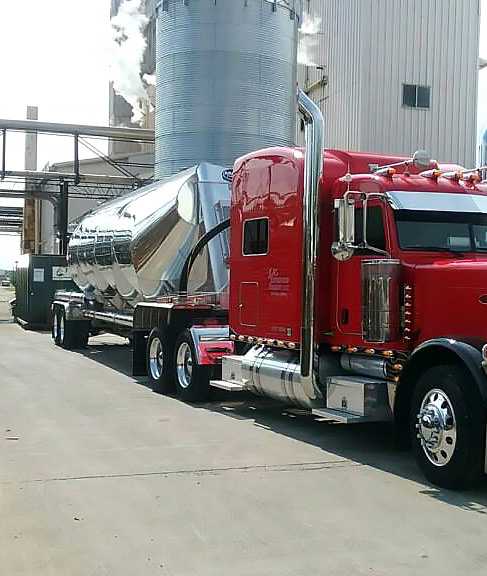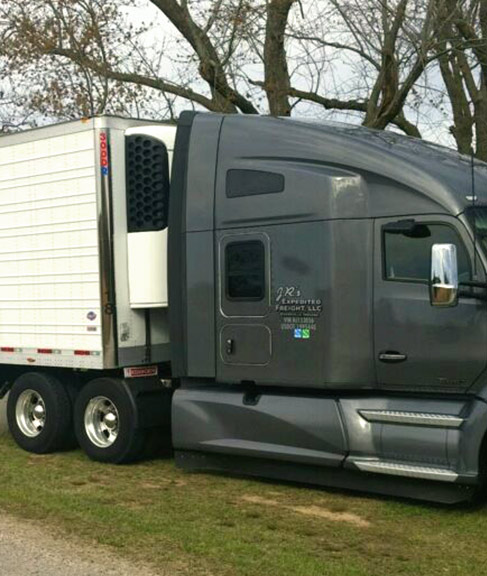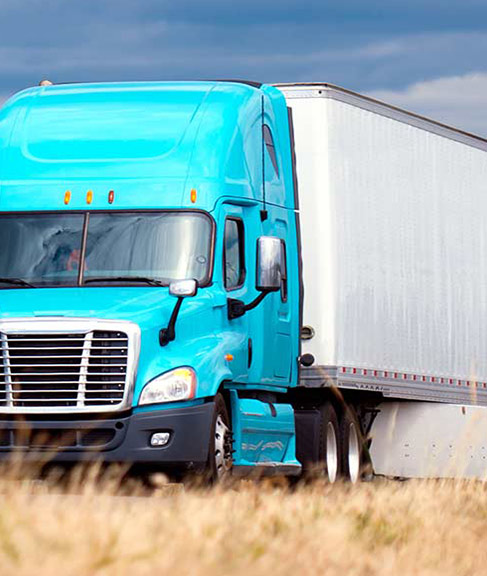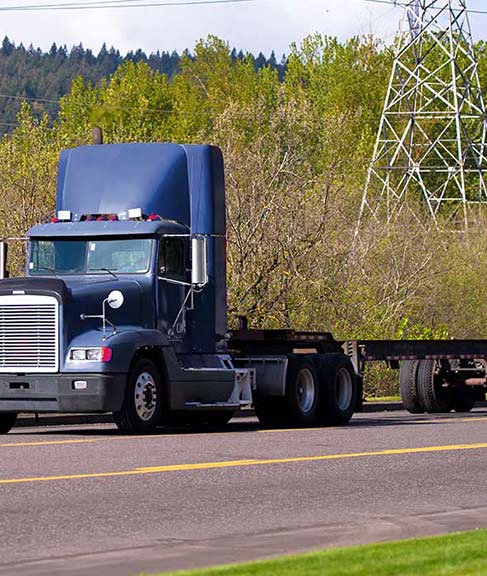At JR’s Expedited Freight, we take pride in our fleet of trucks, trailers, and talented drivers. No matter what job we’re presented, we can handle it. This is because of a diverse range of semi trailers that dot our yard in Evansville, IN. What types of semi trailer are here? While there are more than can be listed here, we’ll review what we at off at JR’s.

Bulk Tank
The dry bulk tank (aka “pneumatic trailer”) is basically a metal cylinder with a series of cone-shaped hoppers at the bottom and a series of openings (or “manholes”) at the top and back of the tank. At the bottom of each hopper is a valve, opening into a pipe that runs below the trailer. Those valves are closed when a shipper loads the truck. When it comes time to unload, the driver opens them, letting product run out of the hopper and into the pipe.
Dry bulk commodities vary a lot in density. A cubic foot of dry sand weighs roughly 100 lbs., while the same volume of a material called perlite (used in industry and horticulture) might weigh only 5-8 lbs. Those differences have big consequences for transportation, especially when it comes to staying within the Department of Transportation’s 80,000-lb. limit on gross vehicle weight.
The newer trailers come with onboard scales which can tell drivers – approximately – how much weight they have onboard, accurate to within a couple of hundred pounds. To get a precise measure of the product weight, the driver first takes the empty truck to a certified scale to obtain a “light weight.” Once the product is loaded, the driver returns to the scale to get the loaded weight, which is printed on a scale ticket. Of course, that number, minus the light weight, gives you the weight of the product.

Reefer
A refrigerated container or reefer is an intermodal container (shipping container) used in intermodal freight transport that is refrigerated for the transportation of temperature sensitive cargo.
A refrigerator is a term used to refer to a truck, trailer or freight container that is equipped with a refrigerating unit for the transport of temperature-sensitive goods. For LTL transport, general options are available to support freight in a “cool” or “fresh” temperature range or in a frozen temperature range. A “cold” range is usually used for loads, such as fresh food or other perishable items. If you send Truckload to the refrigerator unit, you can request a more specific range.
Refrigerators sometimes want to transport their trailers, taking a dry freight that does not require cooling. If you want to send regular dry goods and ask if a refrigerated trailer will work for you, it’s important to remember a few details. The floors of the refrigerated trailer are usually made of corrugated aluminum, unlike the flat wooden floors of ordinary dry baths. This can lead to damage to certain types of cargo. It is also important to note that the weight of the refrigeration unit itself will affect the gross weight of the tractor and the freight. This means that the load capacity of the refrigerated trailer will allow you to reduce weight before hitting the legal weight.

Dry Van
Dry van shipping is one of the most popular and widely relied on freight transport techniques available. It has actually remained a preferred method of transport due to the high schedule and various benefits of having actually an enclosed trailer throughout the shipping process.
Dry van trailers are attached to semi-trucks generally for shipping large quantities of loads, products, products, or bigger products like vehicles. In fact, dry vans are really the most popular and typical trailer you see behind a semi-truck today! The factor these trailers have actually created the name “dry van trailers” is since they keep the goods and products “dry” and secured from the external elements, like weather, road debris, accidents, and so on.
Dry van trailers are available in several sizes and products. The maximum length enabled a dry van trailer is 53 feet long. The two most popular kinds of dry van trailers are ‘general trailers’ and ‘puppy trailers’. General dry van trailers are 53-feet long, whereas the puppy dry van trailers are 26-29 feet long.
In addition, there are several materials that dry van trailers are readily available in. These trailers are primarily made from galvanized steel, aluminum, hardwood, or iron.

Flat Bed
Flatbed shipping is transportation for cargo that may not require the enclosure of a dry van, cannot be loaded or unloaded from a dock or does not fit within the dimensions of standard truck trailers. A flatbed’s design allows for cranes and forklifts to load goods from all angles.
Flatbed shipping provides some dimensional flexibility for large freight since there are no physical walls. Where dry van trailers are loaded from the rear, flatbed trucks can be loaded from either side, as well as the top and back. Flatbed equipment includes step decks, double drops and RGNs
A legal flatbed trailer is typically 48’ long and 8.5’ wide, with varying deck length for step decks, double drops and removable goose necks (RGNs). When loading a flatbed trailer, shippers need to be aware of the maximum height and width allowed on roads. Legal flatbeds, step decks, double drops and RGNs are some of the most common flatbed trailers used for shipping.
Not all flatbed loads require a tarp. With this in mind, it’s important to find a truck that is properly appointed should you need one. The process to load flatbed shipments is dependent upon the particulars of the shipping location and the type of cargo being handled. If your goods require the use of a crane for loading, take steps to ensure the appropriate equipment is available when your truck arrives for the most efficient operation.
